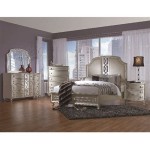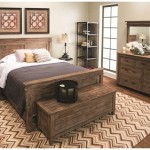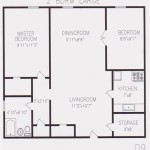Mold Keeps Coming Back In Bedroom: Understanding the Root Cause and Prevention
The persistent reappearance of mold in a bedroom is a common household problem that often signifies a deeper issue than mere surface contamination. While wiping away visible mold may offer temporary relief, it rarely addresses the underlying conditions that foster its growth. Understanding the factors contributing to recurring mold and implementing comprehensive remediation strategies are crucial for maintaining a healthy indoor environment and preventing future outbreaks.
Mold, a type of fungus, thrives in damp, poorly ventilated areas. Bedrooms, due to their enclosed nature and potential for humidity buildup, can become ideal breeding grounds. Common sources of moisture, such as leaky roofs, plumbing issues, condensation, and inadequate ventilation, can all contribute to the problem. Ignoring these underlying causes will inevitably lead to the mold's resurgence, regardless of how frequently it is cleaned.
Identifying the Source of Moisture
The first and most critical step in preventing mold from recurring is to pinpoint the source of moisture. This requires a thorough inspection of the bedroom and surrounding areas. Pay close attention to areas prone to water intrusion, such as walls near windows and doors, ceilings, and floors. Leakage from the roof, even a minor one, can gradually saturate building materials, creating a favorable environment for mold growth. Similarly, plumbing leaks, whether from a dripping faucet or a hidden pipe, can introduce significant moisture into the room. Check under sinks, around toilets, and along exposed pipes for any signs of water damage or dampness.
Condensation is another common culprit, particularly in bedrooms with poor ventilation. When warm, moist air comes into contact with cold surfaces, such as windows or exterior walls, condensation forms. This moisture can seep into porous materials like drywall, carpets, and fabrics, providing the necessary conditions for mold to flourish. The habit of drying clothes indoors or using humidifiers without proper ventilation exacerbates the problem. Using a dehumidifier in the bedroom can significantly reduce mold growth, but finding and solving the source of the moisture is more important.
Beyond obvious leaks and condensation, consider less apparent sources of moisture. For example, inadequate insulation can lead to temperature differentials that promote condensation, while improper grading around the foundation can allow water to seep into the building. In some cases, moisture may be originating from outside the bedroom, such as from a bathroom with poor ventilation or a leaky air conditioning unit located nearby. A professional home inspection can be invaluable in identifying hidden sources of moisture and assessing the overall condition of the building's envelope.
Proper Mold Remediation Techniques
Once the source of moisture has been identified and addressed, it is essential to properly remediate any existing mold growth. Simply wiping away visible mold with a household cleaner is often insufficient, as it does not kill the spores or prevent regrowth. The proper remediation method depends on the extent and type of mold growth. For small areas of mold (less than 10 square feet), homeowners may be able to handle the cleanup themselves, following specific safety precautions. For larger areas, it is recommended to hire a certified mold remediation professional. Professional mold cleanup services are essential for a large contamination.
When undertaking DIY mold remediation, it is crucial to wear appropriate personal protective equipment (PPE), including a respirator, gloves, and eye protection, to minimize exposure to mold spores. The affected area should be thoroughly cleaned with a mold-killing solution, such as a mixture of bleach and water (always follow manufacturer's instructions and never mix bleach with ammonia). Porous materials, such as drywall, carpet, and insulation, that are heavily contaminated with mold may need to be removed and replaced. These materials should be carefully bagged and disposed of to prevent the spread of mold spores.
Professional mold remediation involves more sophisticated techniques, such as HEPA vacuuming, antimicrobial treatments, and containment strategies to prevent cross-contamination. HEPA vacuums are equipped with filters that capture even the smallest mold spores, preventing them from being dispersed into the air. Antimicrobial treatments are used to kill any remaining mold spores and prevent future growth. Containment barriers, such as plastic sheeting, are used to isolate the affected area and prevent the spread of mold spores to other parts of the home. Following remediation, it is crucial to dry the affected area thoroughly to prevent recurrence. Monitoring humidity levels and addressing any lingering moisture problems are essential for long-term success.
Maintaining Adequate Ventilation and Humidity Control
Preventing the return of mold requires ongoing efforts to maintain adequate ventilation and humidity control in the bedroom. Proper ventilation helps to remove excess moisture and prevent condensation, while humidity control limits the amount of moisture available for mold growth. Several strategies can be employed to achieve these goals.
Improving ventilation can be as simple as opening windows regularly, particularly after showering or bathing. Installing exhaust fans in bathrooms and kitchens can help to remove moisture at its source. Ensuring that heating and cooling systems are properly maintained and that air ducts are clean and free of obstructions can also improve air circulation throughout the home. In some cases, installing a whole-house ventilation system may be necessary to address persistent ventilation problems. These systems typically draw fresh air from outside and exhaust stale, moist air from inside, providing a continuous supply of clean, dry air.
Humidity control can be achieved through a variety of methods. Using a dehumidifier in the bedroom can help to reduce humidity levels, particularly during humid seasons. Air conditioners also remove moisture from the air as they cool it. Avoiding activities that generate excess moisture, such as drying clothes indoors or using humidifiers excessively, can also help. Monitoring humidity levels with a hygrometer can provide valuable information about the indoor environment. Maintaining humidity levels below 60% is generally recommended to prevent mold growth. Addressing any underlying moisture problems, such as leaks or condensation, is also crucial for effective humidity control.
Furthermore, careful selection of building materials and furnishings can contribute to a healthier indoor environment. Using mold-resistant drywall, paint, and flooring can help to prevent mold growth, even in areas with high humidity. Choosing breathable fabrics and avoiding tightly woven carpets can also help to promote air circulation and reduce moisture buildup. Regular cleaning and maintenance, including vacuuming carpets and upholstery, wiping down surfaces, and inspecting for signs of moisture or mold growth, are essential for preventing recurrence.
In conclusion, preventing the recurrence of mold in a bedroom requires a multifaceted approach that addresses the underlying causes, implements proper remediation techniques, and maintains adequate ventilation and humidity control. By identifying and eliminating sources of moisture, properly cleaning and disinfecting affected areas, and implementing strategies to promote airflow and reduce humidity, homeowners can create a healthier and more comfortable living environment. Regular monitoring and maintenance are essential for long-term success. If mold problems persist despite these efforts, consulting with a qualified professional is recommended to identify and address any underlying issues that may be contributing to the problem.

Four Early Signs Of Concealed Mould Growth In Your Bedroom How To Control It Express Co

Bedroom Mould Causes Removal Prevention Long Term Greenshop Paints

Black Mould On Walls Causes Symptoms Prevention Treatment

Four Early Signs Of Concealed Mould Growth In Your Bedroom How To Control It Express Co

Black Mould On Walls Causes Symptoms Prevention Treatment

Black Mould On Walls Causes Symptoms Prevention Treatment

Preventing Mold On Bedroom Walls Ceilings Building Advisor

White Mold Growth In Your Home Causes Solutions Environix

What Causes Black Mould On Ceilings

Black Mould On Walls Causes Treatment Emperor Paint








